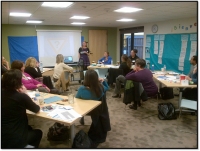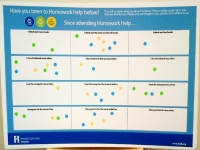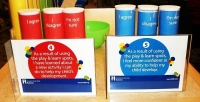Measuring the Impact of Library Services
Hennepin County Library, Minn.
Innovation Synopsis
Hennepin County Library went beyond output measures and learned ways to more effectively and creatively measure the impact that Library services have on patrons. In a year-long project, HCL tested multiple methodologies, resulting in a handbook of practical tools and approaches we now use to evaluate our programs and services.
Challenge/Opportunity
Public libraries have vast experience collecting output measures. While useful, they do not tell the whole story. The Institute of Museum and Library Services (IMLS) has led the charge to spur libraries nation-wide to move into a culture of outcomes-based evaluation. As reported on their website, “Outcomes allow us to know something about the extent to which we have (or haven’t) reached our audiences.” The importance and value of outcome-based measurements were clear. They could strengthen our services and help us make more informed, strategic decisions. The challenge was to identify desired outcomes, develop sustainable, scalable methods to measure them, develop the necessary skills to collect and analyze this data, and, most importantly, how to make outcomes-based evaluation a part of our organizational culture.
Key Elements of Innovation
The Library contracted with The Improve Group, a consulting form that taught, guided, and explored with us. HCL limited the scope of the project to select youth services at a single pilot location. Improve Group staff introduced us to a variety of data collection tools and led a workshop with us to create simplified logic models for each of the five selected services. From there, tools were created, staff and volunteers were trained, and the testing began. The project collected data to evaluate the tool's usefulness. At the project’s completion, the Library had a new toolbox of methods and staff increased their understanding of outcomes-based evaluation.
Achieved Outcomes
With this project, we increased our capacity and developed our skills and understanding of outcomes-based measurement. We used the project to experiment and take some risks. We found that certain tools were more successful than others, with some capturing patron interest and engagement while others were difficult to administer. We concluded, however, that tools that were less successful in the testing phase may in fact be effective in other settings. With the project’s completion we have built on the momentum created by the pilot, begun to use the handbook and continued our efforts to create a culture of outcomes-based service evaluation.



